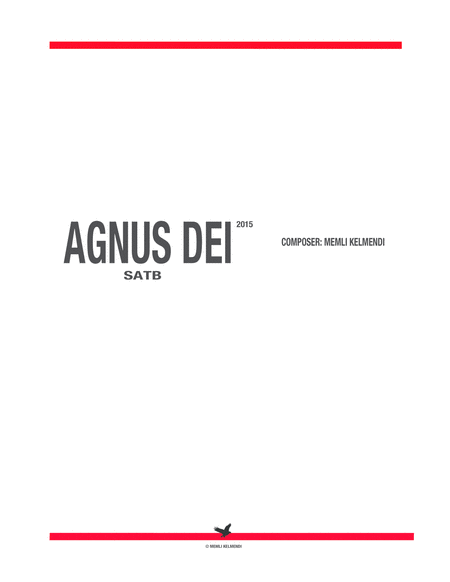Choral Choir (SATB) - Digital Download SKU: A0.1032828 Composed by Memli Kelmendi. Contemporary. Octavo. 4 pages. Memli Kelmendi #5712943. Published by Memli Kelmendi (A0.1032828). Agnus Dei is composed by Kosovar composer Memli Kelmendi (*1986).The composition is based on the style of Renaissance music. It is based on simple notation but is very spiritual. Agnus Dei has been performed in many countries around the world such as; Charleston, New Jersey, New York, Los Angeles California, Czech Republic, Italy, Romania, Philippines, Argentina, France, Croatia, Chile, Bosnia, Turkey, Belgium, North Macedonia, Albania, Kosovo etc. SATB. Duration: ca. 2:00.So, Agnus Dei should be part of your choral repertoire!.
